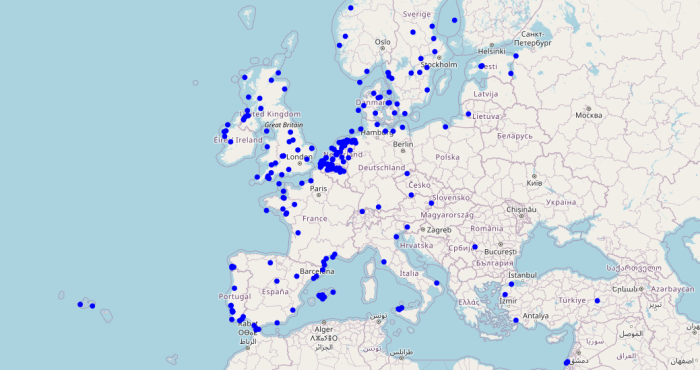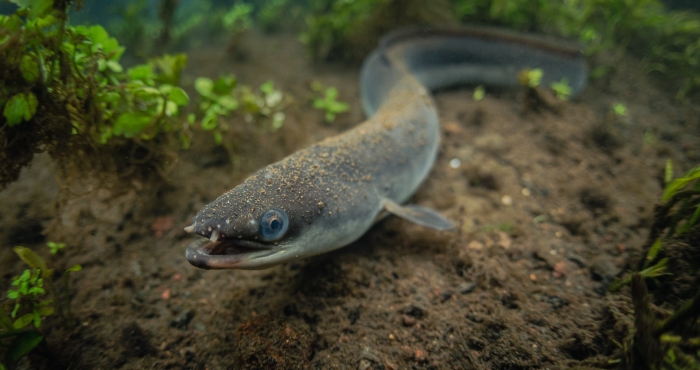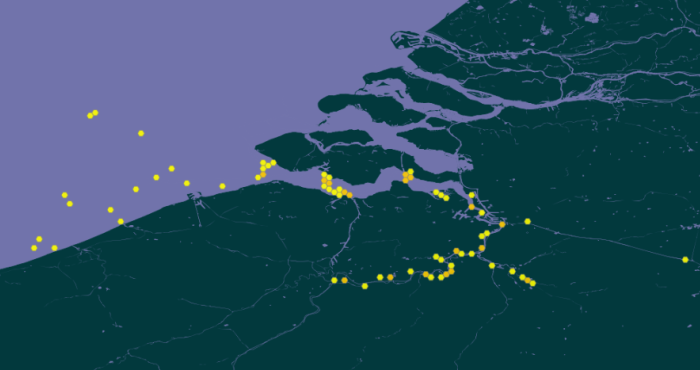


From Europe to the Atlantic: new insights into eel migration
European eels are legendary travelers, undertaking journeys of up to 9,000 km to spawn inthe Atlantic Ocean. A groundbreaking study led by LifeWatch researchers has broughttogether tracking data from more than 2,300 eels across 9 countries, revealing howgeography and river barriers shape the timing of this epic migration.Return of the twaite shad to the Scheldt River After a Century-Long Absence
The twaite shad, a migratory fish that once disappeared from the Scheldt River due to pollution, has made a remarkable return in the past decade. Known locally as the “May fish,” the twaite shadspawns in the river between late April and early May. Researchers from the Institute for Nature and Forest Research (INBO) have been studying the species since its return in 2014, using LifeWatch Belgium acoustic telemetry and data loggers to track the fish’s movements and habits.New Study Monitors Fish Migration in the Leie and Scheldt Rivers
Over recent weeks, researchers from the Institute for Nature and Forest Research (INBO) have deployed an extensive network of detection devices alo

First ETN datasets available through GBIF
The first datasets from the Permanent Belgian Acoustic Receiver Network are now available via GBIF. Over 507,000 fish tracking records from Belgian waters offer new insights into species movement and biodiversity.
Patterns in nature: WoRMS images in a unique design book
The book Coding, Shaping, Making combines inspiration from architecture, mathematics, biology, chemistry, and other fields to look towards the future of architecture, design and art. It presents ongoing experiments in the search for fundamental principles of form and form-making. This enables us to...

Assessing the state of the oceans
The second World Ocean Assessment – WOA II – is a global exercise by hundreds of marine scientists to evaluate trends and identify knowledge gaps in the world ocean. Two chapters of WOA II have made use of several components of the LifeWatch Species Information Backbone.

How WoRMS and OBIS guided BASF as a lighthouse
For patent applications and legal issues, it is important for BASF to collect and analyse biodiversity data: where exactly do organisms live, in which environment do they mainly live, what is their genetic code, ...? That is why they called on the expertise of WoRMS and OBIS.

Tracking the fish trails
Understanding the importance of estuarine and coastal areas for the migration of fish and recovery of populations requires tracking a fish’s movement. For this purpose, Pieterjan Verhelst analyses the tracks of tagged Atlantic cod (Gadus morhua) and European eel (Anguilla anguilla), detected on the...

Understanding mass mortality in saiga antelope population
The Saiga antelope is an endangered species that lives in Central Asian steppes and semi-arid regions. Scientists around the world are working tirelessly to prevent it from becoming completely extinct. Every year, they migrate approximately 500 km from north to south, and back. In 2015, roughly 60%...